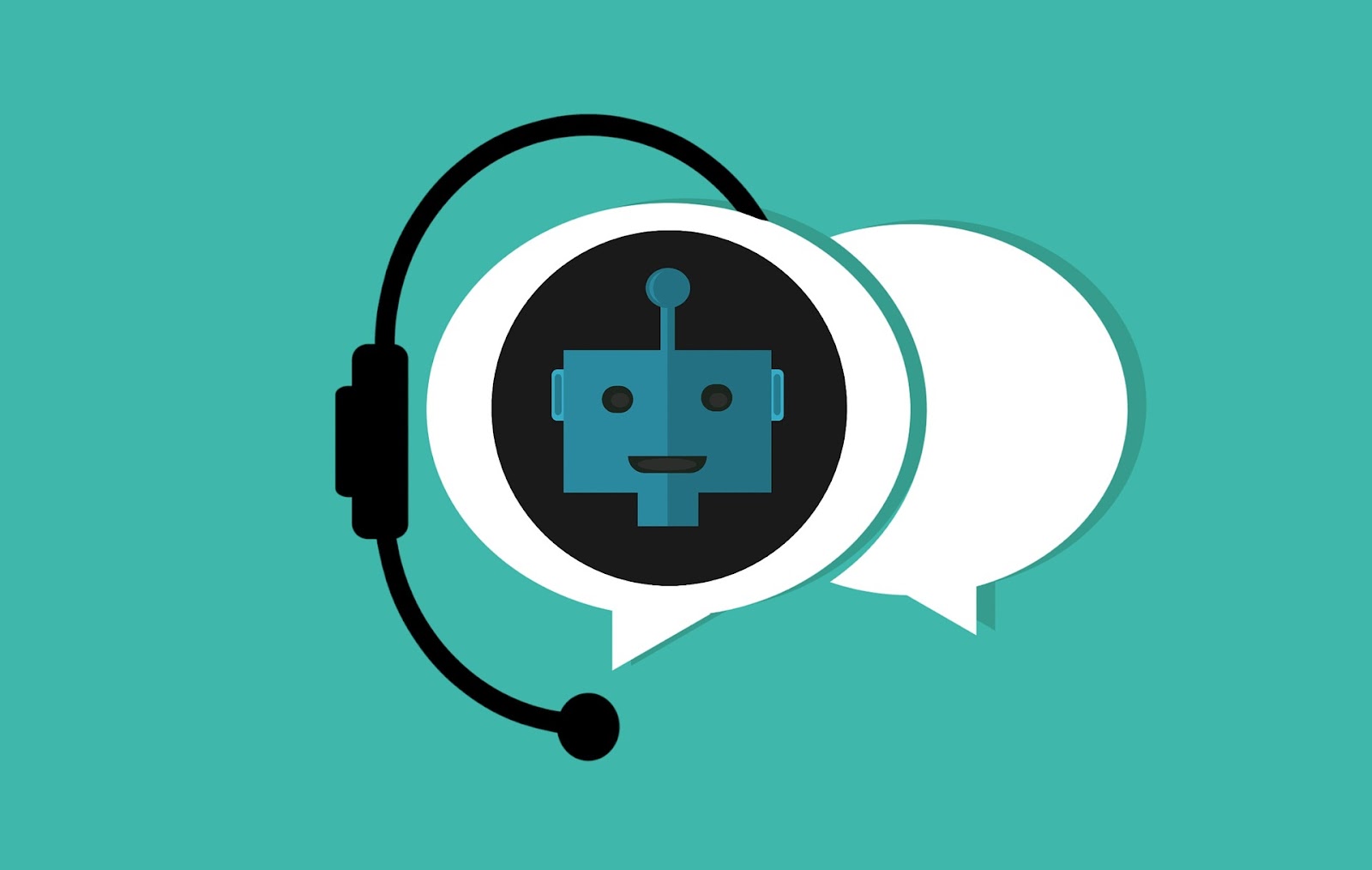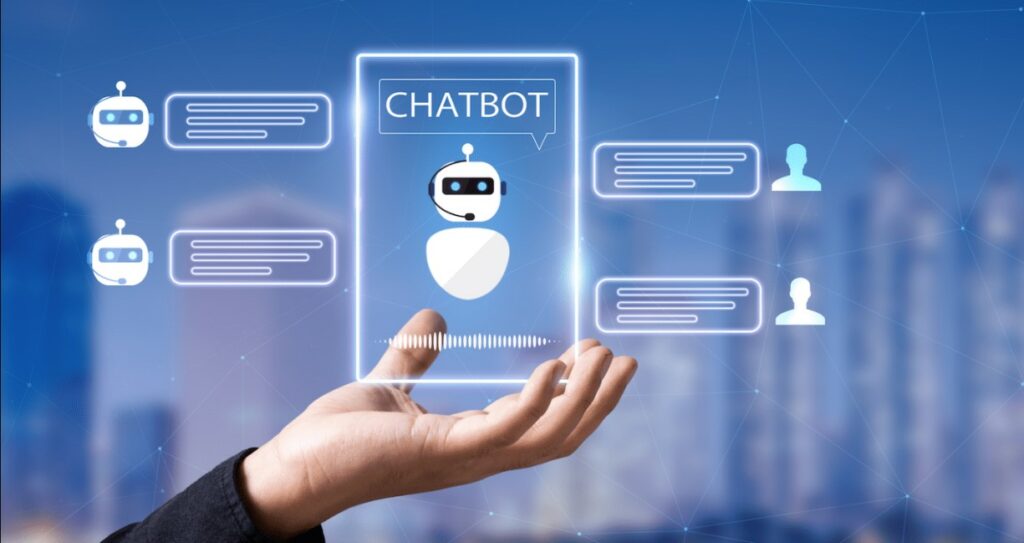Choosing the right chatbot for your business can save you time, money, and energy in the long run. Here are some of the factors you should consider when choosing the right chatbot for your business:
1. Goal: Identify the goal of your chatbot – what do you want it to do? Is it going to improve customer service, generate leads or automate your sales process?
2. Features: Choose a chatbot with the features that cater to your business’s needs. For instance, if you want to handle customer service requests, look for a chatbot that has natural language processing and can answer inquiries.
3. Integration: Ensure that the chatbot can integrate with your existing systems for a seamless experience. If it cannot, it may be more trouble than it is worth, requiring more time and money to implement.
4. Cost: Choose a chatbot that fits within your budget. Some chatbots are more expensive to develop and maintain than others.
5. Scalability: Choose a chatbot that can scale as your business grows. Consider your long-term needs.
Considering these factors will help you choose the right chatbot for your business, saving you valuable time and resources.
Table of Contents
ToggleWhat is a Chatbot And How Does it Work
Chatbots are computer programs designed to facilitate conversations with people. They are programmed to be able to understand natural language, respond to user requests, and carry out automated tasks. Chatbots can be used for a myriad of business applications, from providing customer service to generating leads.
In this section, we’ll discuss what chatbots are and how they work.
What is a Chatbot?
A chatbot is an AI-powered software that simulates human conversation using natural language processing (NLP), machine learning, and rule-based systems. Chatbots are designed to automate customer interactions, provide personalized recommendations, and improve customer service.
There are two main types of chatbots: rule-based chatbots and AI-powered chatbots.
Rule-based chatbots are designed to follow a set of predefined rules and responses based on keywords and specific input from users. These chatbots are best suited for simple, transactional interactions such as answering frequently asked questions, booking appointments, and providing basic customer support. AI-powered chatbots, on the other hand, use machine learning and natural language processing to learn and improve their responses over time based on customer interactions. These chatbots are best suited for complex interactions such as personalized recommendations, product searches, and advanced customer support. When choosing the right chatbot for your business, it’s important to consider your business needs, customer preferences, and budget. A chatbot can save time and improve customer satisfaction, but it’s essential to choose the right one that aligns with your business objectives.
How Does a Chatbot Work?
Chatbots are computer programs designed to simulate human conversations through messaging platforms. They use artificial intelligence (AI) and natural language processing (NLP) to understand user queries and respond in a human-like manner. Understanding the chatbot’s functionality and purpose can help you choose the right one for your business.
There are three types of chatbots you can choose from based on your business requirements.
Rule-based chatbots: These chatbots can respond to specific keywords and follow pre-defined rules to provide an answer. They are best suited for simple and straightforward queries.
AI-powered chatbots: These chatbots use machine learning and NLP to understand the user’s intent and respond accordingly, making them ideal for complex queries.
Hybrid chatbots: These chatbots combine rule-based and AI-powered chatbots to offer a better customer experience while being cost-efficient. Choose a chatbot that can address the needs of your business and customers effectively.
Types of Chatbots
Chatbots can be classified into three main types, each with its unique characteristics and functionalities that make them suitable for specific business needs.
Rule-based chatbots: These chatbots use predefined rules and decision-trees to generate responses to customer inquiries. They are best suited for businesses that have a limited range of customer queries and simple interaction.
Machine Learning chatbots: Unlike Rule-based chatbots, Machine Learning chatbots learn from customer interactions and improve over time. They are ideal for businesses that deal with complex interactions and require more personalized responses to customer queries.
AI chatbots: AI chatbots use natural language processing and machine learning algorithms to understand and interpret customer inquiries. They are ideal for businesses that require intelligent automation for their customer service needs.
Before choosing the right chatbot for your business, it is essential to determine your business needs, the scope of interactions you want to automate, and your customer expectations.
Factors to Consider When Choosing a Chatbot
Chatbots are becoming increasingly popular and are becoming key components in many businesses. With the right set up, they can automate customer service and sales processes. In order to get the most out of your chatbot it is important to consider the various factors when selecting a chatbot. This article will discuss the main factors to consider when choosing a chatbot for your business.
Purpose of The Chatbot
The purpose of a chatbot is to provide a seamless and interactive interface for your customers to engage with your business, improve customer satisfaction, and reduce human involvement by automating routine tasks.
Here are the factors you need to consider when choosing a chatbot for your business:
1. Purpose and functionality of chatbot – Determine what tasks you want your chatbot to perform and choose a chatbot that aligns with those requirements.
2. Ease of use – Choose a chatbot that is easy to set up, configure, and integrate with your existing systems.
3. Customization – Pick a chatbot that can be customized to match your brand’s tone and style and fulfill unique business requirements.
4. Customer support and analytics – Choose a chatbot that provides detailed analytics and customer support to help you track engagement and improve the overall customer experience.
By considering these factors, you can choose the right chatbot that suits your business needs and provides a hassle-free, automated customer support experience.
Target Audience And User Persona
While choosing the right chatbot for your business, it is crucial to keep your target audience and user persona in mind. Here are some essential factors to consider:
1. Demographics: Identify the age, gender, location, and income level of your target audience. This information will help you select a chatbot that resonates with your audience and offers personalized solutions.
2. Pain Points: Understand the common challenges faced by your audience and choose a chatbot that provides instant solutions to their problems.
3. Communication Style: Identify the preferred communication style of your target audience, whether it’s formal or informal, and choose a chatbot that aligns with their preferences.
4. Platform: Choose a chatbot that can be integrated with all of the platforms where your audience interacts with your brand, such as Facebook, Instagram, or your website.
By taking into account these factors, you can choose a chatbot that caters to the specific needs of your target audience, improves customer engagement, and ultimately leads to more conversions.
Chatbot Functionality And Features
Chatbots are a cost-effective and efficient way to improve customer service and streamline your business. There are several factors to consider when choosing a chatbot for your business, including its functionality and features.
Here are some key chatbot functionalities and features to keep in mind:
Natural Language Processing: NLP is a must-have feature that enables the chatbot to understand and interpret human language, making interactions more accurate and effective.
Machine Learning: Machine Learning allows the chatbot to learn and improve its responses based on previous interactions, making it more intelligent and personalized.
Integration Capabilities: Your chatbot should be able to integrate with your existing systems, such as CRM or inventory management software, for better efficiency.
Multi-Platform Support: A chatbot that can communicate across various platforms, such as Facebook Messenger, WhatsApp, or your website, expands your reach and improves accessibility.
Pro Tip: Before choosing a chatbot, consider your business goals, target audience, and user-experience expectations to ensure you select the right chatbot for your business.
Integration With Existing Systems And Platforms
When choosing the right chatbot for your business, it is essential to consider whether it can integrate with your existing systems and platforms.
Here are some factors to keep in mind:
1. Compatibility: Ensure that the chatbot can integrate with your existing software, such as CRM or CMS, without crashing or causing any compatibility issues.
2. Data sharing: Check whether the chatbot can share data with your systems and platforms, so that you have a comprehensive view of customer interactions and behavior.
3. APIs: If your systems and platforms have open APIs, look for a chatbot that can easily integrate with them.
4. Security: Ensure that the chatbot’s integration complies with your security standards to keep your data and customer information safe.
By choosing a chatbot that seamlessly integrates with your existing systems and platforms, you can streamline your business operations and improve overall efficiency.
Popular Chatbot Platforms
In today’s digital world, chatbots are essential for businesses to maximize their customer engagement and improve customer service. Chatbots are computer programs that can interact with customers on websites and messaging apps. With the right chatbot platform, you can customize your chatbot to deliver specific messages and content to customers.
In this section, we will explore some of the popular chatbot platforms out there and help you choose the best one for your business.

Dialog Flow
Dialog Flow is a popular chatbot platform used for building conversational interfaces for businesses of all sizes. It uses natural language processing and machine learning to understand and respond to user queries in a human-like manner.
Choosing the right chatbot for your business can be challenging, but here are some factors to consider:
- Your business needs and goals, and how a chatbot can help you achieve them
- Your target audience and the platform(s) they prefer to use for engaging with your brand
- The type of chatbot that fits your needs (rule-based vs. AI-powered)
- The complexity of the conversation flow you want to create
- The scalability and customization options of the chatbot platform you choose
By carefully considering these factors, you can choose a chatbot platform that meets your business needs and helps you provide a seamless customer experience.
Microsoft Bot Framework
Microsoft Bot Framework is a popular and powerful platform for building intelligent chatbots. With its easy-to-use interface and extensive integrations, it’s a great choice for businesses looking to automate their customer service, sales, and marketing efforts.
Some of the top features of the Microsoft Bot Framework include:
- Multi-platform support: Build chatbots for popular messaging platforms like Facebook Messenger, Skype, Microsoft Teams, and more.
- Natural language processing: The Bot Framework uses AI and machine learning to understand and respond to customer inquiries in natural language.
- Analytics and insights: Get detailed analytics and insights into your chatbot’s performance, including user engagement, retention, and satisfaction metrics.
When choosing the right chatbot for your business, consider the features you need, the messaging platforms you want to target, and your budget. It’s important to choose a platform that is easy to use and integrate into your existing systems. Pro Tip: If you’re just starting, consider a cloud-based chatbot platform that offers pre-built templates and drag-and-drop interfaces for easier development.
IBM Watson Assistant
IBM Watson Assistant is a powerful chatbot platform that helps businesses enhance their customer service by providing a seamless conversational experience to their users. With Watson Assistant, businesses can create chatbots that can understand natural language, identify user intent, and respond with personalized recommendations, answers, or solutions.
When choosing the right chatbot platform for your business, consider the following factors:
- Chatbot functionality: Look for a platform that has advanced features such as natural language processing, machine learning, and AI capabilities.
- Integration compatibility: Choose a platform that can integrate seamlessly with your existing systems and channels such as messaging apps, social media, or websites.
- Customization options: Look for a platform that allows you to customize your chatbot’s appearance, tone, and functionality according to your brand’s personality and user preferences.
Keep these factors in mind to choose the right chatbot platform for your business, and give your customers a seamless and personalized experience.
Amazon Lex
Amazon Lex is a chatbot building platform by Amazon Web Services that enables businesses to create conversational interfaces for their customers using natural language processing and machine learning-powered technology. With Amazon Lex, you can build chatbots that can understand and respond to customer requests through text and voice messaging across various channels, including social media, mobile devices, and even IoT devices. Amazon Lex simplifies the chatbot creation process by providing pre-built templates and integration with other AWS services such as Amazon S3, Amazon Lambda, and Amazon Cloudwatch.
By choosing Amazon Lex for your business, you can streamline customer interactions, automate customer service, and improve customer engagement, ultimately leading to increased customer satisfaction and revenue growth. Pro tip: Before selecting a chatbot platform, it is essential to identify the specific requirements of your business and target audience, including the type of functions you want your chatbot to perform, the channels you want to support, and the level of natural language processing required.
Building a Chatbot
Building a chatbot is a great way to extend the reach of your business and provide a convenient way to engage with your customers. With chatbots, you can automate customer service, help answer questions, and even improve sales conversions. But before you embark on creating a chatbot, you need to understand what a chatbot is and how it works. This article will provide an overview of chatbot technology and tips on how to choose the right chatbot solution for your business.
DIY Chatbot Development
Developing a DIY chatbot for your business can seem daunting, but with the right tools and guidance, it can be a simple and efficient process.
Here are the steps to follow when building a chatbot and choosing the right chatbot for your business:
1. Define the purpose of your chatbot and identify the tasks it will perform.
2. Choose the right chatbot platform that aligns with your technical skill level and budget. Some popular platforms include Chatfuel, ManyChat, and Botsify.
3. Create a flowchart of the conversation your chatbot will have with users to ensure that it aligns with your business goals and user needs.
4. Train your chatbot by providing it with relevant and accurate data to enhance its ability to understand user inquiries and provide helpful responses.
5. Test your chatbot to ensure that it functions correctly, addresses user inquiries effectively, and provides a seamless user experience.
With a well-designed chatbot, you can take your business to new heights by offering personalized customer service, automating customer inquiries, and providing a more streamlined user experience.
Outsourcing Chatbot Development
Outsourcing chatbot development can save you time and money while ensuring that you get a chatbot that is tailored to your business needs. Here are a few tips to help you choose the right chatbot for your business:
Determine the purpose of your chatbot – Do you want it to provide customer support or to engage with customers?
Choose the right platform – There are many chatbot development platforms available, such as Botpress, Dialogflow, and IBM Watson. Each platform has its unique features and pricing models, so choose one that suits your needs and budget.
Find an experienced chatbot developer – Look for a developer with experience in developing chatbots for businesses similar to yours.
Define your chatbot’s personality and tone – Decide on the personality and tone of your chatbot to ensure that it aligns with your brand and voice.
Test and optimize your chatbot – Once your chatbot is developed, test it thoroughly and optimize it based on user feedback.
Pro tip: Outsourcing chatbot development can be cost-effective and help you get a chatbot that is tailored to your business goals. Be sure to choose the right platform and developer for your needs and test and optimize your chatbot regularly to ensure its effectiveness.
Hiring a Chatbot Developer
When it comes to building a chatbot, hiring a chatbot developer who has experience in creating bots tailored to your business needs can take your customer service to the next level. Here are some tips to help you choose the right chatbot developer for your business:
Look for developers with experience in developing chatbots for businesses in your industry.
Choose a developer who has a good understanding of your customer base and brand.
Ensure they have a clear understanding of your business objectives and goals for the chatbot.
Ask for references and case studies to gauge their success rate in delivering chatbots that meet business objectives.
Choose a developer who offers ongoing maintenance and support to ensure that your chatbot stays updated and running smoothly.
Pro Tip: Building a chatbot is an investment, so take your time to evaluate different developers before hiring one to ensure that you’re getting the best value for your money.
Chatbot Best Practices
Chatbots are automated programs designed to interact with customers in a conversational manner, offering personalized interactions and services tailored to their individual needs. In order to get the most out of a chatbot, it is important to consider the goals and objectives of your business and choose the right chatbot accordingly. It is also vital to understand how chatbots work and how to best deploy them in order to get the most value out of them. Let’s explore the best practice guidelines when it comes to selecting and using chatbots.
Design a User-Friendly Chatbot Interface
Designing a user-friendly chatbot interface is critical for ensuring that users have a positive experience interacting with your chatbot and that the chatbot can effectively fulfill its intended purpose. Here are some best practices to keep in mind when designing your chatbot interface:
Keep the interface simple and intuitive.
Use clear and concise language.
Provide users with clear options and calls to action.
Make sure the chatbot is responsive and can handle a range of requests.
Incorporate visual elements like buttons and images to enhance the user’s experience.
Use a consistent tone and personality throughout the chatbot.
Test the chatbot with real users to identify any usability issues and refine the design.
Ensure The Chatbot Engages With Customers Effectively
One of the primary goals of having a chatbot for your business is to engage with customers effectively. However, to ensure efficiency in delivering useful information and solving problems, you must follow the best practices for choosing the right chatbot to represent your business.
Here are some tips to ensure an engaging chatbot experience:
Personality: Choose a chatbot that aligns with your brand voice and connects with customer needs.
NLP: Train the chatbot to understand natural language processing (NLP) to respond to variations of user inquiries.
Test and tweak: Once you set up your chatbot system, test it and make improvements and adjustments to improve efficiency and better engage with customers.
Analytics: Use analytics to analyze the trends in chatbot engagement, which helps you make more informed decisions about how to configure the chatbot. Implementing these best practices can increase the effectiveness of your chatbot and improve engagement with your customers.

Continuous Improvement And Updating of Chatbot
Continuous improvement and updating of your chatbot is essential for enhancing its performance and providing a seamless experience to your customers.
Here are some best practices for updating your chatbot:
- Analyze customer interactions regularly and identify areas for improvement.
- Use data and analytics to track the chatbot’s performance and identify bottlenecks in the customer journey.
- Implement user feedback and prioritize user needs.
- Train the chatbot on new data and technologies to keep it up-to-date.
- Regularly update the chatbot’s knowledge base and expand its responses to new queries.
- Strive for personalization and context-awareness by leveraging customer data.
By committing to continuous improvement and updating of your chatbot, you can build customer trust and loyalty and enhance the customer experience.
Chatbot Success Stories
Chatbots have been helping businesses engage customers, increase sales, and streamline operations since the early 2000s. In recent years, the development of AI-powered chatbots has seen remarkable success stories with some of the biggest companies in the world adopting them to improve customer engagement and satisfaction.
In this article, we’ll explore some of the most successful chatbot success stories and what business owners can learn from them.
H&M’s Kik Chatbot
H&M’s Kik chatbot was a successful project that helped improve their customers’ shopping experience. It is vital to choose the right chatbot for your business to engage your target audience effectively.
Here is a pro tip: Before creating a chatbot, it’s essential to determine your business goals and understand your customers’ preferences. Choose a chatbot style that aligns with your brand and values, and create dialogues that provide value to your customers, such as answering FAQs or recommending products. Regularly monitor and update your chatbot to ensure it stays relevant and useful to your customers. A well-designed and maintained chatbot can help you save time, money, and resources, while also providing an enhanced customer experience.
Sephora’s Kik Chatbot
Sephora’s Kik chatbot is an excellent example of how chatbots can help businesses provide customers with personalized recommendations, tips and product information, and ultimately drive sales.
Kik chatbot’s success can be attributed to the following factors:
1. Natural Language Processing (NLP) technology used in the chatbot allows customers to ask questions, get personalized product recommendations and tips via text messages.
2. The chatbot uses quizzes, polls, and user-generated content to engage customers and improve the overall customer experience.
3. The convenience of 24/7 availability and real-time feedback received from the chatbot increases customer engagement and eventually builds brand loyalty.
When choosing a chatbot for your business, it’s essential to consider its purpose, functionality, target audience, and budget. A well-designed chatbot can benefit your business by reducing customer response time, automating various tasks, and promoting customer engagement. Additionally, eventually, it can lead to increased customer loyalty and higher profits.
Pizza Hut’s Chatbot on Messenger
Pizza Hut’s chatbot on Messenger is a great example of a successful chatbot implementation. It has contributed not only to improved customer service but also to increased sales. The chatbot allows customers to order pizza, pay for it, and track their delivery through Messenger. Moreover, it can suggest pizzas based on what the user has previously ordered, make recommendations and offer personalized coupons. The Pizza Hut chatbot has significantly decreased wait times for orders and streamlined the ordering process, providing a better customer experience. When choosing a chatbot for your business, consider your industry, audience, and business goals. A successful chatbot can help you automate routine tasks, provide 24/7 support, improve customer experience, and increase sales. Pro tip- Make sure your chatbot is easy to use, engaging, and adds value to your customers’ experience.





